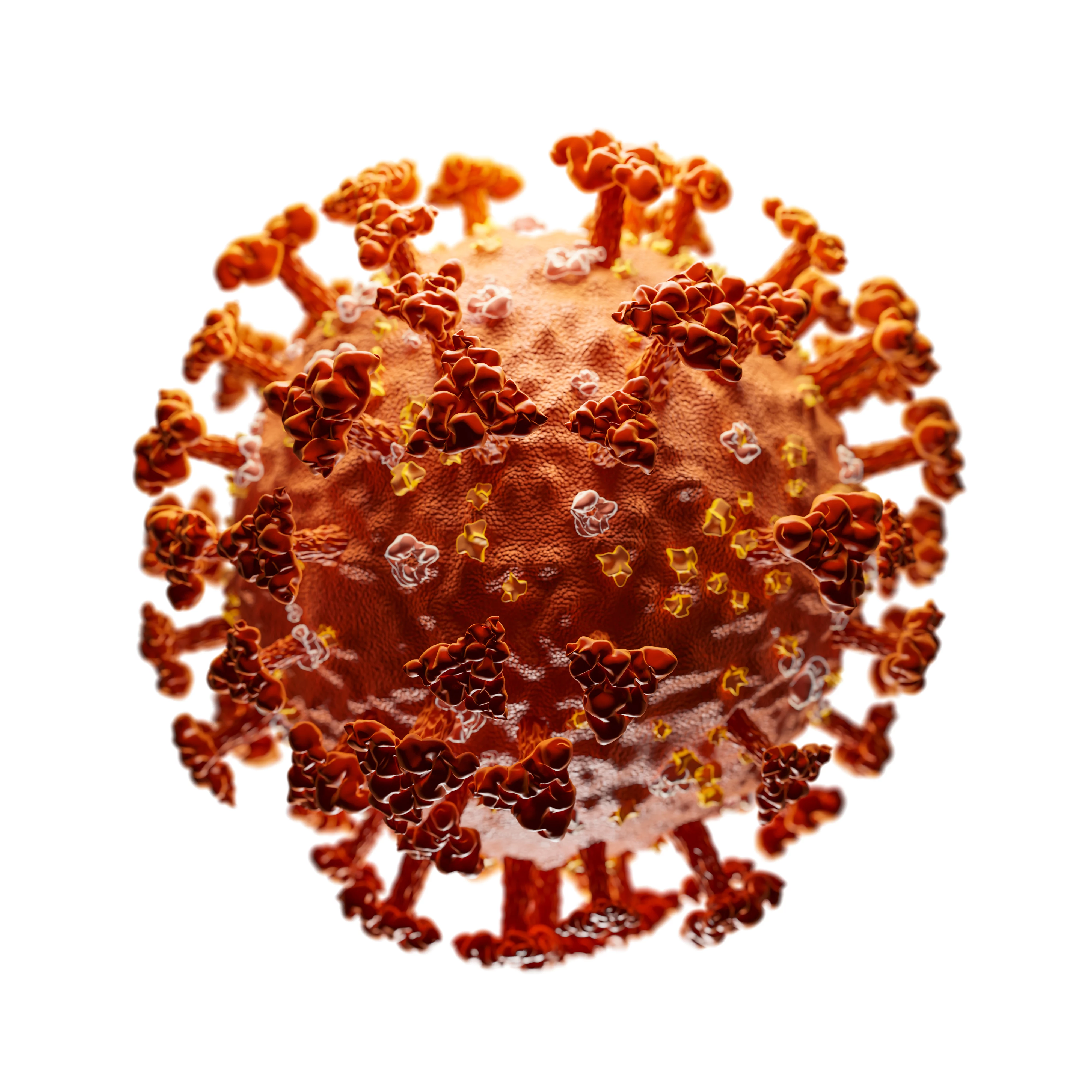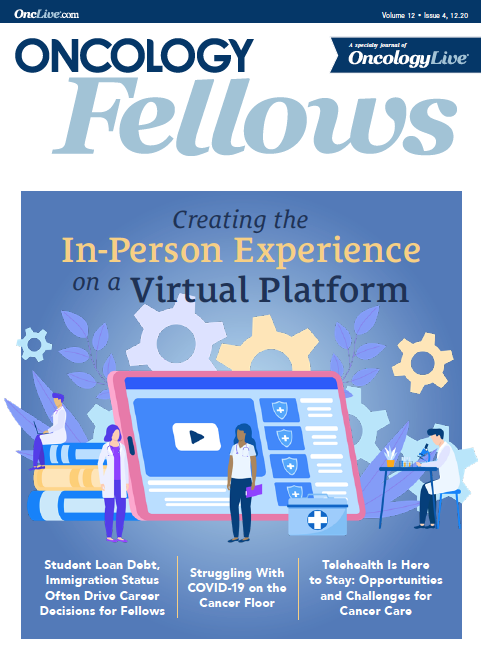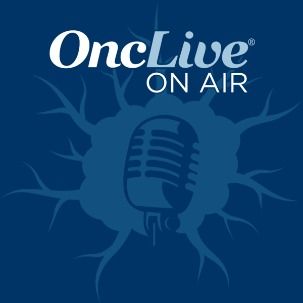Publication
Article
Oncology Fellows
Creating the In-Person Experience on a Virtual Platform
Author(s):
The coronavirus disease 2019 crisis has changed all aspects of medical education but perhaps altered clinical education most dramatically.

The coronavirus disease 2019 (COVID-19) crisis has changed all aspects of medical education but perhaps altered clinical education most dramatically.1 Clinical rotations at outside centers, previously a critical part of the application process in many specialties, have been eliminated almost entirely. This is concerning as these “away rotations” help provide students with a sense for a program’s culture, a chance to connect with future mentors, the ability to further assess their specialty choice, and an opportunity to have prolonged contact with a potential training program on an “audition” basis.
The 2020-2021 residency application process will be similarly altered.2 With most radiation oncology residency and hematology/oncology fellowship programs considering a shift to virtual interviews this cycle, programs will be challenged by the impersonal nature of the virtual platform.3 A potential way to bridge the gap between students and program is to use virtual resources such as clerkships, meet-and-greets, office hours, visiting professors, and interviews. Herein we describe our experience transitioning to a fully virtual environment while capturing the immersive experience typical of an in-person environment. We hope our experience in the specialty of radiation oncology will be helpful to other residents and fellows and programs, even those outside radiation oncology, as they make similar adaptations.
Virtual Clerkships
In lieu of away rotations, structured online experiences have been constructed to provide clinical exposure and curricula at outside institutions. Specifically in radiation oncology, the Radiation Oncology Virtual Education Rotation (ROVER) provides access to introductory disease site-specific videos and organizes multi-institutional teaching sessions featuring experts across the country, geared specifically toward senior medical students.4 Patient cases are written and moderated by radiation oncology residents and discussed with attendings, including details on appropriate workup and treatment options for each case. These sessions are recorded and widely available to students.
Many programs also have been offering 1- to 4-week virtual clerkships to increase student exposure and engagement in radiation oncology.5 These clerkships are available through the Visiting Student Application Service, just as in-person away rotations typically have been, and qualify for course credit. Virtual clerkships integrate medical students into radiation oncology clinics, didactics, tumor boards, chart rounds, and treatment planning, and can give them an opportunity for an end-of-rotation presentation to the department on a topic of their choice.
To best approximate the in-person environment and ensure a successful rotation, students should have access to the electronic health record (EHR) system to prepare for clinic ahead of time. On clinic day, patients should be asked for permission before bringing medical students into the room. Medical students may be set up on a device capable of running videoconferencing software with audio and video capabilities. Mounting the camera on a tripod is a simple thing that can ensure that interactions between the patient and the resident or attending are as natural as possible.
In the room, the student should be positioned so that the entire clinical interaction is viewable. Between patients, students can stay with the attending and resident, discuss cases, and learn radiation oncology decision-making. Virtual mentoring opportunities can also become available through 1-on-1 interactions with faculty.
All of this is available without the added personal and financial burdens of traveling, obtaining lodging, and being away from family. The benefits of virtual rotations described herein may also improve diversity and equity in the field among applicants for whom financial and personal barriers might otherwise prevent pursuit of an away rotation. For these reasons, it is possible that virtual rotations may continue post pandemic.
Online Meet-and-Greets
Virtual meet-and-greets provide an avenue for medical students interested in virtually connecting with radiation oncology residency programs and residents without committing to a full rotation. Such sessions have been offered by many residency programs and provide information about the program, the field of radiation oncology, and the interview process. Most of these sessions occur before Electronic Residency Application Service opens for submission and can help educate students on which program or programs would help them be most successful.
Meet-and-greets can be held via platforms such as Zoom, Skype, GoToMeeting, Facebook Live, or Instagram. Students can be recruited through social media, emails from schools, word of mouth, or posting on medical forums. Students are encouraged to register and receive a private invitation via email to prevent deliberate disruptions (“Zoom-bombing”). Programs are encouraged to identify a moderator to help facilitate smooth transitions. Sessions are typically limited to an hour and can include residents only, attendings only, or a combination. Resident-led sessions are important to provide insight into the program’s culture, and attending engagement is important to provide insight into potential mentorship, educational, and research opportunities. These can help medical students gain a deeper sense for the attending and resident dynamic, especially in a time when they will not be physically visiting departments to observe interactions.
Topics of discussion can include program overview and curriculum, elective and professional development opportunities, residency benefits, alumni job placements, resident life, and open question-and-answer sessions—anything that can give prospective students a sense of the program and faculty. Organizers can arrange breakout sessions to provide a more intimate setting for discussion.
In larger sessions, the chat function may be especially helpful to moderate discussions. Meet-and-greets can help provide an easy way for students to get a glimpse into what their life would be like as a resident, in a more casual virtual setting.
Despite Limitations, Virtual Education Is Likely to Remain Here to Stay
The rapid evolution of medical student education and outreach during the COVID-19 pandemic comes with inherent limitations. Virtual clerkships and meet-and-greets help provide students insight into a program’s day-to-day operations but are still limited by their remote nature. Even with audio and video capabilities, it is easy to miss the many subtleties of in-person interactions, making it more challenging for students to demonstrate their clinical knowledge and skills while expressing their personalities. Travel and lodging costs are eliminated, but so, too, are the opportunities to tour the facilities, eat at the cafeteria, or experience life in the area where the program is located. Likewise, programs will not have the opportunity to observe students examining patients or interacting with their peers and future colleagues.
Medical education and the residency application process have been completely uprooted by the COVID-19 pandemic. Although many students have participated in away rotations in the past, new safety regulations shifted many facets of medical education to the virtual space. Virtual rotations, meet-and-greets, and other educational experiences have emerged to fill these voids and help provide students insight into programs and avenues for mentorship. Despite the inherent limitations, they may become a staple of interdepartmental experience even beyond the COVID-19 pandemic.
Meriem Mokhtech, MD, PGY-3, Department of Therapeutic Radiology at the Yale School of Medicine in New Haven, CT; Wesley J. Talcott MD, MBA, PGY-4, Department of Therapeutic Radiology at the Yale School of Medicine in New Haven, CT; and Henry S. Park, MD, MPH, assistant professor, Department of Therapeutic Radiology at the Yale School of Medicine in New Haven, CT; and the Yale Therapeutic Radiology Virtual Rotation Committee authored this piece.
Nipun Verma, MD, PhD; Megan E. Kassick, MD; Joseph A. Miccio, MD; Jason M. Beckta, MD, PhD; Vikram Jairam, MD; Suzanne B. Evans, MD, MPH; Roy H. Decker, MD, PhD; and Kimberly L. Johung, MD, PhD; contributed equally to this report.
References
- Rose S. Medical student education in the time of COVID-19. JAMA. 2020;323(21):2131-2132. doi:10.1001/jama.2020.5227
- Hammoud MM, Standiford T, Carmody JB. Potential implications of COVID-19 for the 2020-2021 residency application cycle. JAMA. 2020;
- Kouzy R, Abi Jaoude J, Yue J, et al. Applying to radiation oncology amid a pandemic. Adv Radiat Oncol. 2020;5(4):777-779. doi:10.1016/j.adro.2020.06.017
- Virtual Radiation Oncology for Medical Students. Accessed October 23, 2020. https://www.radoncvirtual.com
- Pollom EL, Sandhu N, Frank J, et al. Continuing medical student education during the coronavirus disease 2019 (COVID-19) pandemic: development of a virtual radiation oncology clerkship. Adv Radiat Oncol. 2020;5(4):732-736. doi:10.1016/j.adro.2020.05.006










